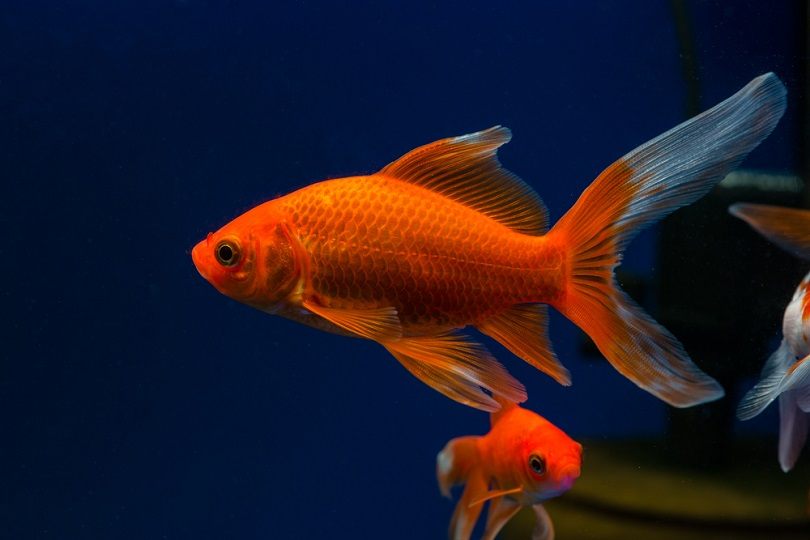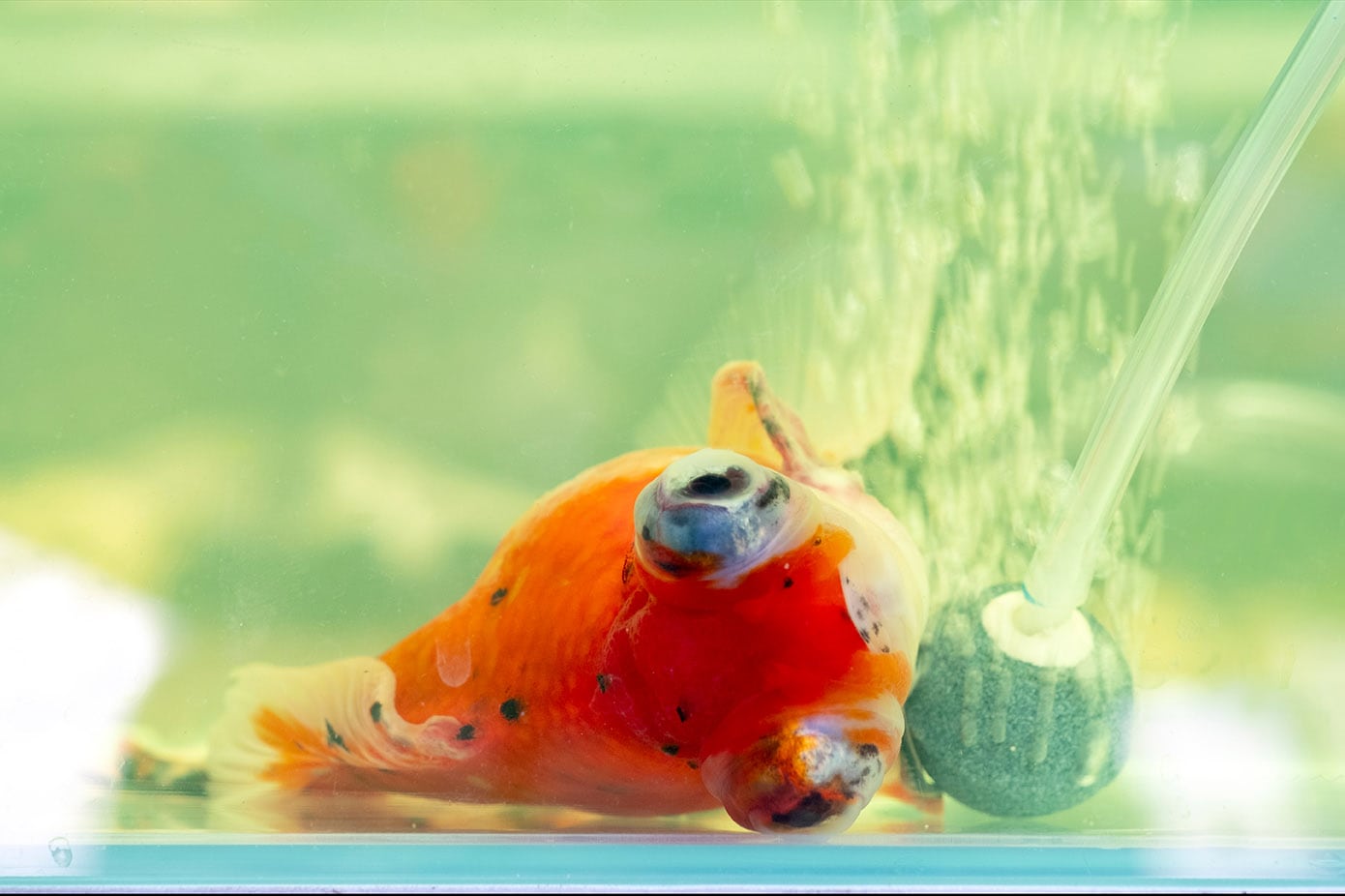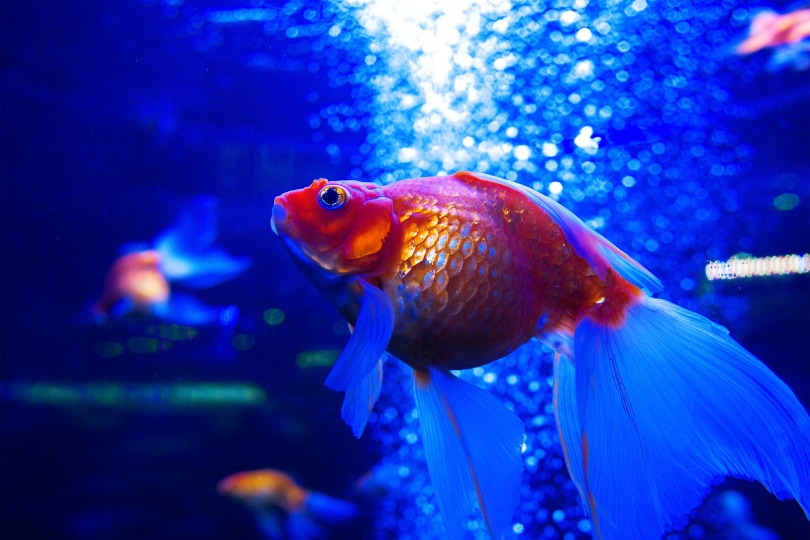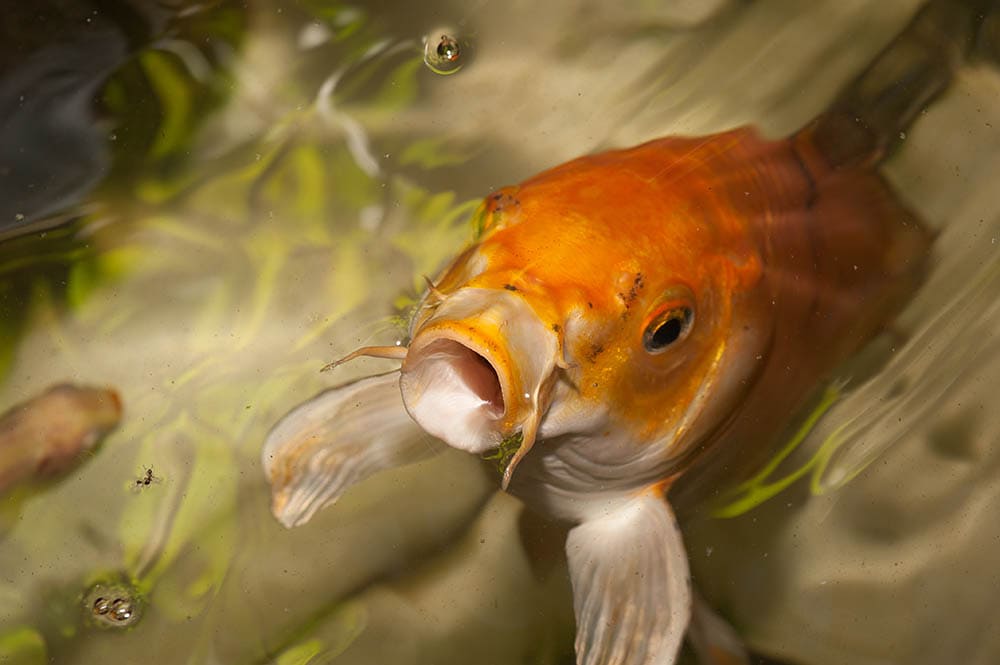
Breeding goldfish is an exciting way to make goldfish keeping even more enjoyable. The journey to breeding goldfish is tricky, however, and you should ensure that you have the time and money to spend to produce healthy goldfish offspring. Goldfish are notorious for breeding without much help from the keeper, but you will still have to ensure that you have professional knowledge on goldfish genetics and take into consideration the various methods to ethically breed goldfish.
Successful goldfish breeding will involve the parents’ linage and history of illness. It is best to choose healthy goldfish with a quality body shape and no history of previous health issues like swim bladder disorder, tumors, or poor body proportion.
This is a complete guide full of tips and tricks to help you breed the healthiest and most beautiful goldfish offspring.
The Ethics of Goldfish Breeding
As with all animals, there is the worry of ethics in purposefully breeding already inbred goldfish varieties. Goldfish are plentiful in the aquarium world and are one of the most popular pet fish kept as pets. This means that there is a lot of goldfish out there looking for good homes. Although there are not many ‘rescues’ that take in abandoned goldfish if any, and you should have an ethical reason for wanting to broaden the goldfish population.
A good mindset for breeding goldfish is to produce quality specimens with few health issues and an overall show quality body and coloration. This will draw in potential buyers who are searching for a breeder who has excellent stock that has been bred for all the right reasons. Goldfish owners want a goldfish that will experience minimal genetic issues later in life and grow to their full size while reaching close to their full lifespan potential.
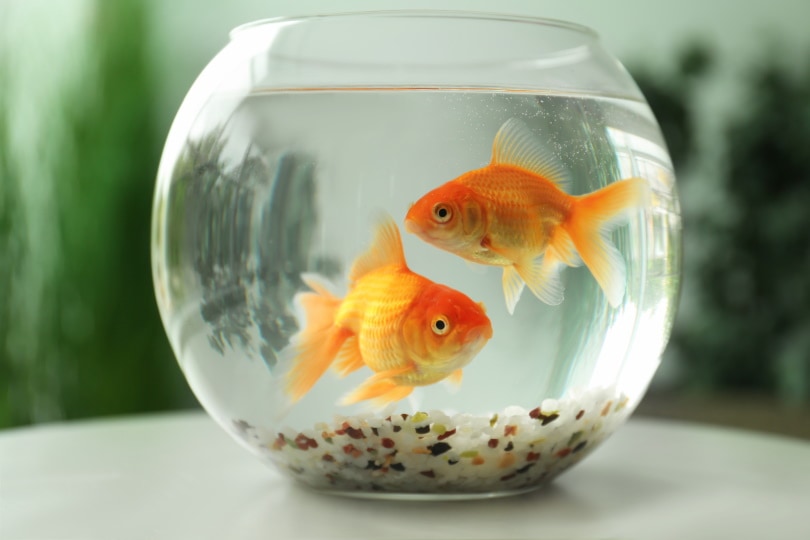
The Cost and Equipment Required to Breed Goldfish
Breeding goldfish is not an inexpensive task, it may cost more to cater to their care than the overall profit you can make from the breeding industry. This is because goldfish will eat their eggs and their young, this makes them poor parents and goldfish parental care is non-existent. It will mean you would have to purchase extra tanks and equipment to not only incubate fertile eggs, but you will also have to move eggs and fry to different cycled tanks to avoid them from being culled by larger goldfish who only see them as a quick meal. You will have to equip each tank with an air stone and filter and take on the parent role.
A basic essential kit to get you started in the goldfish breeding hobby is to purchase the following:
Once you have set up the tank and equipment, you are ready to begin breeding your goldfish!
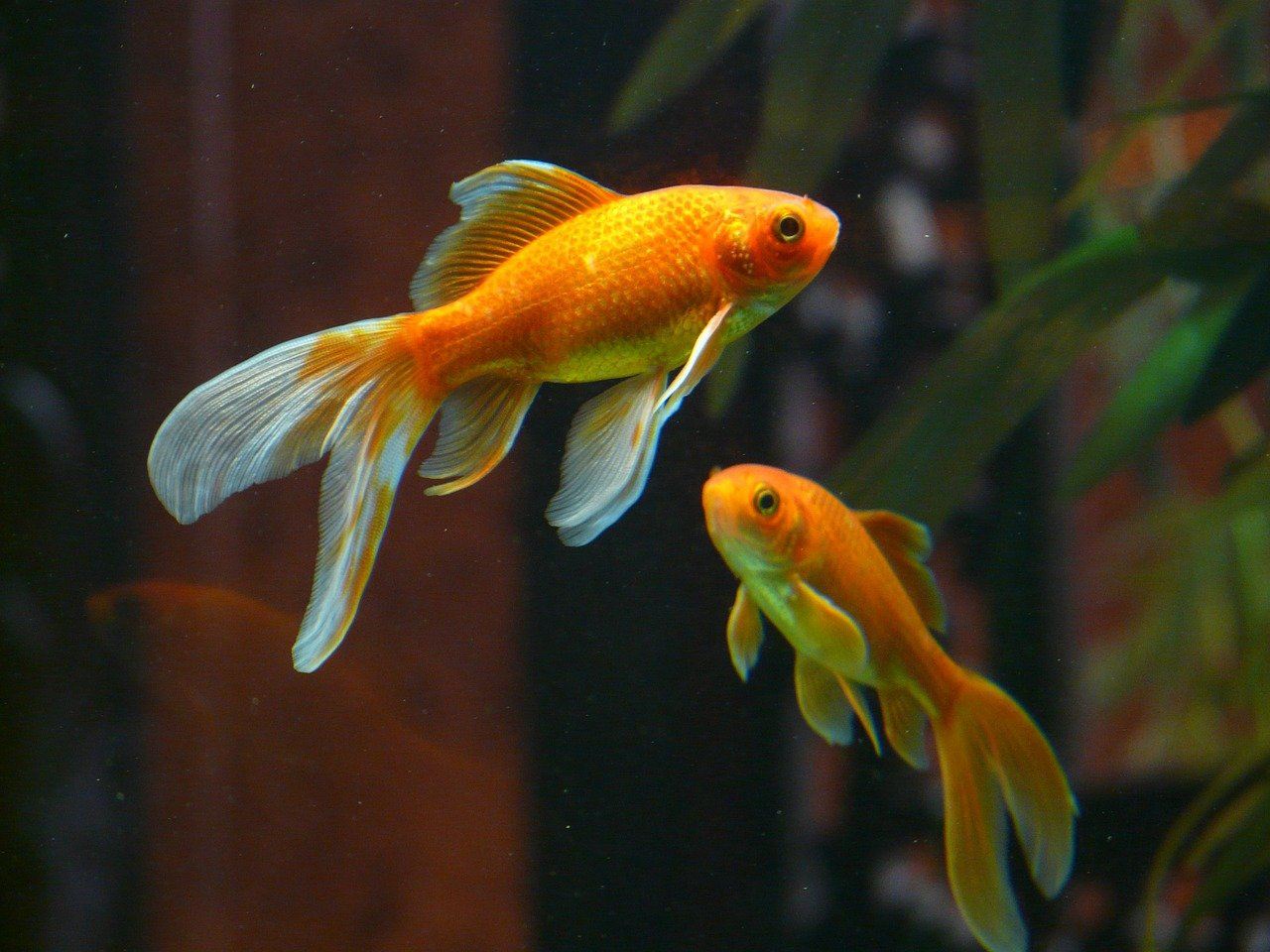
Goldfish Spawning and Mating
Goldfish can breed at the age of one to two years old. We recommend breeding your goldfish at 3 years old, especially with female goldfish. A goldfish at its full size will likely be able to carry eggs much more effectively as the goldfish will have its reproductive system fully developed. If you have a young goldfish, you can also watch for illnesses and genetic failures that will occur in the goldfish as it matures. This will help you to see the genetic potential of the goldfish by their health, size, coloration, and body shape.
It is a good idea to keep records on any health issues and problems that may occur in your goldfish so you have a good idea of which specimens will make great breeding stock.
Spawning behavior will show itself through male goldfish chasing the anal region of female goldfish. During mating season, the females develop unfertilized eggs and take on a bloated appearance. This means she is ready to breed and should be moved to the tank you plan to raise the eggs and fry in. You also have the option of a spawning mop placed in the main tank to allow her to deposit eggs on the mop which allows for easy removal. The female should deposit sticky eggs all along with the tank and the male goldfish will fertilize the eggs with milt.
Goldfish breeding occurs outside of the body. Once the eggs have been fertilized you should remove the parents immediately, so that they do not eat the eggs. The males will also develop breeding starts on their gills that look like specks of salt and are not to be confused with ich. This is a good signal that the male is ready for breeding.
The 8 Tips & Tricks to Follow for Successful Goldfish Breeding
1. Choosing healthy adults
The adults should be as healthy as possible and handpicked to ensure you have the right goldfish types and colors you want to breed together to produce the type of fry you desire.
2. Setting up the breeding and fry tank
Set up the tank that the eggs and fry will hatch and develop in. Add in the filter and aeration system and let the tank cycle while you condition the parents.
3. Bump the temperature
Start to increase the water temperature gradually between 23° to 25°C. This will stimulate the fish to think it is spring and will encourage them to spawn.
4. Increase the lighting
Increase the amount of light they receive to stimulate natural springtime daylight hours.
5. Condition the fish
Feed the parents a protein-rich diet with live or freeze-dried foods, this can include daphnia, bloodworms, tubifex worms, or brine shrimp. This will plump them up and get them healthy and increase their immunity.
6. Water replenishes
Start to increase the number of water changes you do, change 15 to 20% every five days to give them clean water to give them a health boost. Content fish are more likely to spawn.
7. Placing in a spawning mop or moving to a breeding tank
Place the spawning mop inside of the tank as soon as you notice any mating behavior through chasing. If you decide to place them in the breeding tank, be sure to include a ratio of one female and two males to encourage the female to deposit her eggs.
8. Separation
Remove the spawning mop once the eggs are deposited or remove the parents from the breeding tank.
Image Credit: smspsy, Shutterstock
Tips Before You Begin Breeding Your Goldfish
- Avoid using charcoal in the filter system as it will remove pheromones goldfish use to signal that they are ready to breed.
- House the males and females together during the conditioning period to help trigger breeding.
- Breed your goldfish when they are at least 2 to 3 years old to ensure healthy offspring.
- Do not breed genetically poor goldfish as this will result in unhealthy fry who may not live exceedingly long past the fry stage.
- Do not fast your fish before breeding, they need as much food for energy as possible.
Goldfish Breeding Fails
Sometimes you may run into trouble when trying to breed your goldfish and this is called breeding failure. It is rare, but sometimes goldfish will not breed. If you have followed all the steps to ensure all the right conditions and breeding requirements have no been met, here are a few reasons your goldfish are not breeding:
- The goldfish have been sexed incorrectly and you may have mistaken a male goldfish for a female or vice versa.
- The tank has not been conditioned to stimulate natural breeding triggers.
- The fish are stressed or ill.
- The fish are not interested in each other, this is rare, but it could be a possibility.
- The female becomes egg-bound and requires immediate help from a professional. She will have trouble depositing eggs and show various health issues as the eggs begin to foul in her reproductive tract.
- The male or female goldfish are experiencing infertility problems and may require herbal supplements from a professional goldfish dealer.
- The goldfish is suffering from nutritional deficiencies from an inadequate diet.
Related Read: Fish Tuberculosis (TB): Complete Guide
Identifying Mating Behaviour
Male goldfish will aggressively chase the females so that she drops her eggs to be fertilized. This will most likely stress the female if it carries on too long, so she should be separated from the males if this is the case. Male goldfish may also chase each other around if there is no female in the tank, and this is also another reason for goldfish breeding failure as the keeper may think the fish are two different genders.
The Mating Process and Stimulation in Nature
- The goldfish enter a period of warm water conditions with limited food options in the wild.
- Eggs develop inside the female goldfish’s body.
- Pheromones are released by the egg-carrying female to trigger the males to breed with them.
- The male goldfish will nudge the female till her eggs drop throughout the tank.
- The eggs are then fertilized and will stick to surfaces like plants or substrate, which makes them hard to remove.
Hand Spawning Goldfish – Experienced Breeders Only
This should only be carried out by experienced and professional breeders because you may injure or even kill the fish if you go about this route incorrectly. This is known as mechanical spawning and the keeper will nudge eggs out of the female by hand. This is done by gently running your thumb alongside the stomach in a downwards motion while the female fish is inside of the water upside down in your hand. You will then repeat this process with the males to release their milt over the eggs.
Natural spawning is the best option when it comes to successfully breeding goldfish and is the safest way to get the goldfish to release their eggs or milt.
Infertile and Fertile Goldfish Eggs
Infertile: The eggs will go a deep white color and have no black dots signaling the eye development of the goldfish in the egg. They will begin to rot after a few days and produce a fluffy fungal coating. The eggs should be disposed of with warm water and a methylene blue solution in the breeding tank.
Fertile: The eggs will be a transparent pearl color and have black dots as the goldfish’s eyes develop. The eggs will hatch after a few days and will even show the outline of the fry if a torch is shone on them.
Conclusion
While breeding is fun and a great way to better the genetic linage of your goldfish, it does require certain expertise. Once the eggs hatch, you will then begin caring for the cute mini versions of the adults. Raising fry is an enjoyable experience and will help you follow the full development process of the stock. If you know the basics of good goldfish care, while having much experience in caring for them, you are ready to become a successful fish breeder!
If you're new to the world of goldfish keeping or are experienced but love to learn more, we highly recommend you check out the best-selling book, The Truth About Goldfish, on Amazon. From diagnosing illnesses and providing correct treatments to proper nutrition, tank maintenance and water quality advice, this book will help you to ensure your goldfish are happy and to be the best goldfish keeper you can be.
Related Read: Shipping and Moving Live Goldfish: Step-by-Step Guide
Featured Image Credit: kaori, Pixabay


